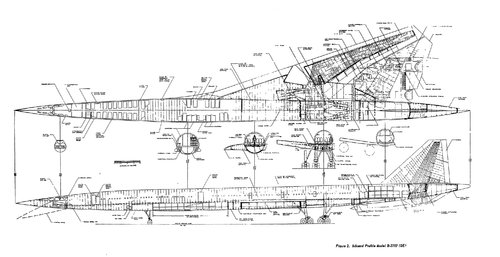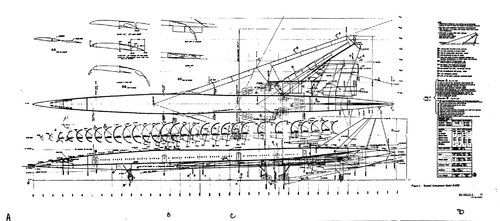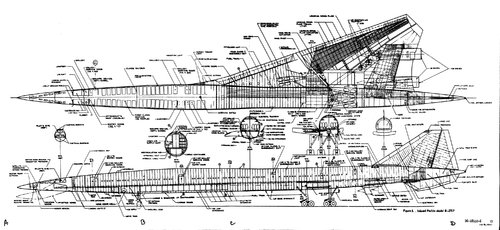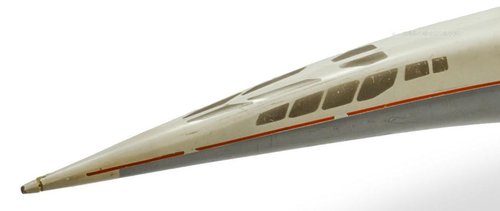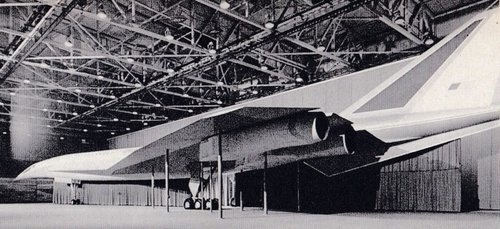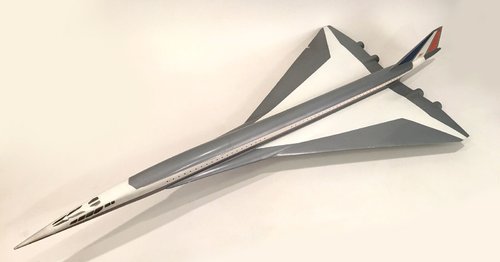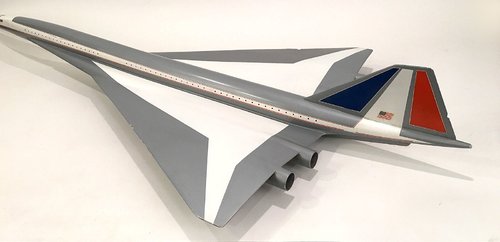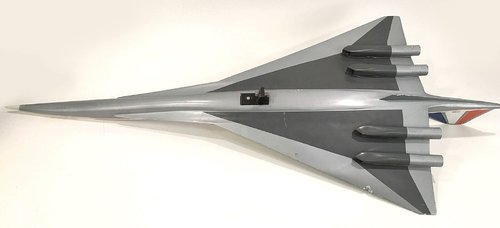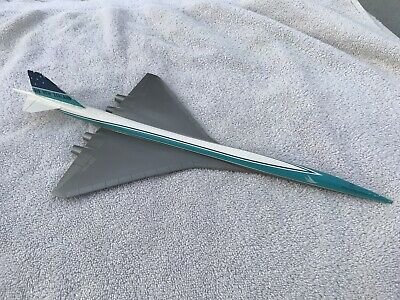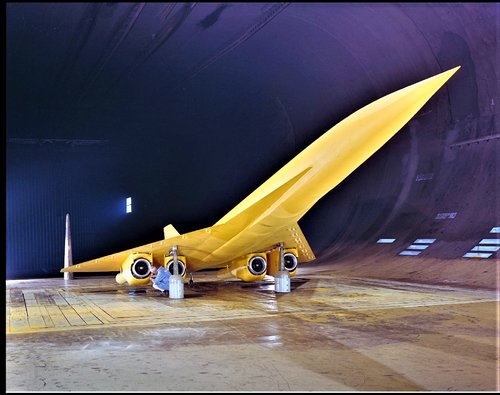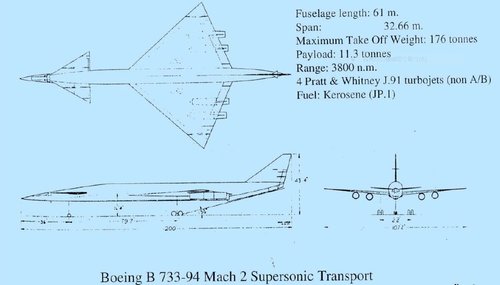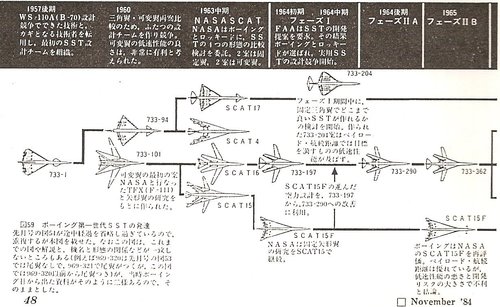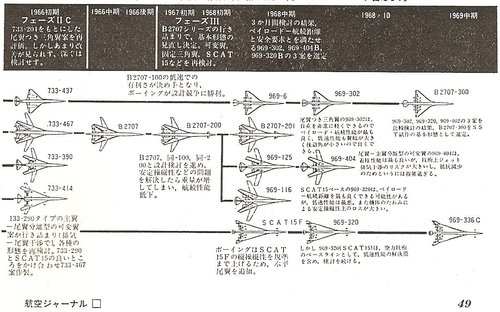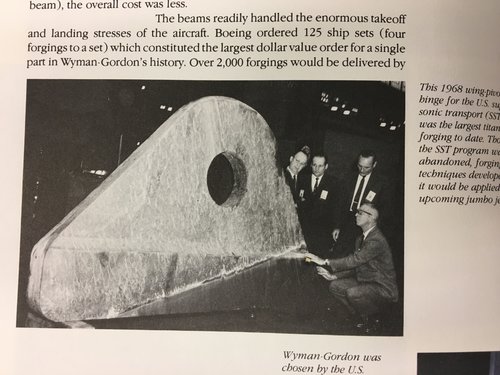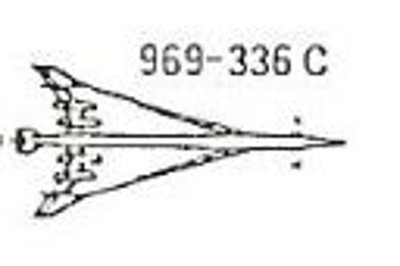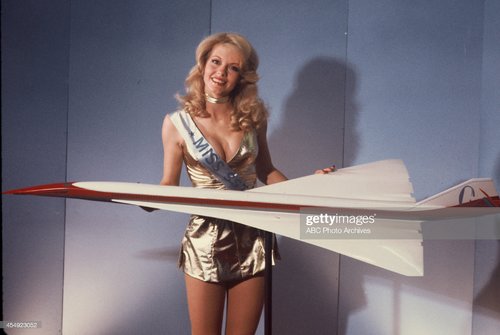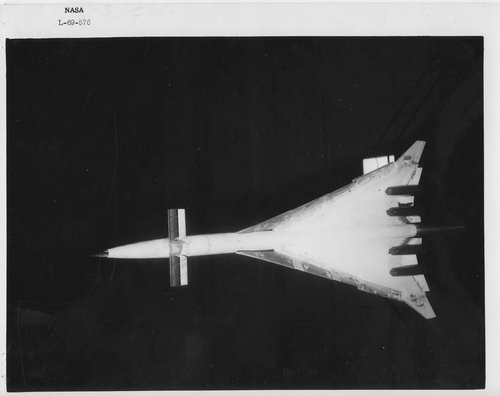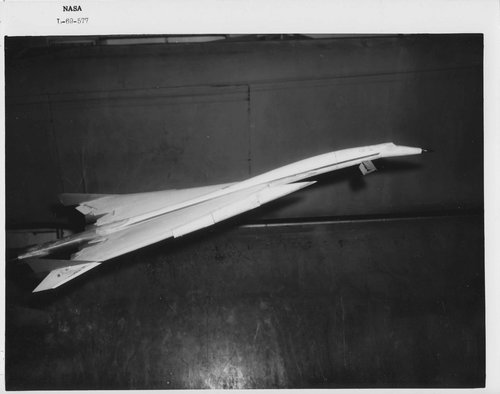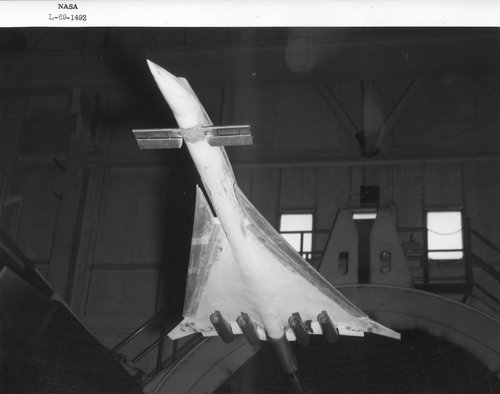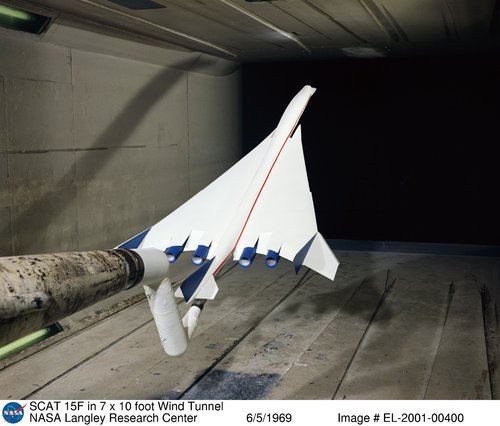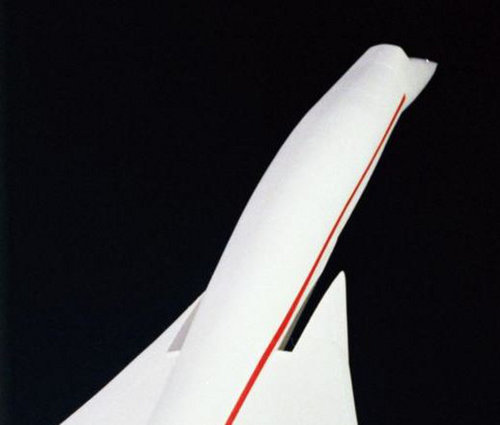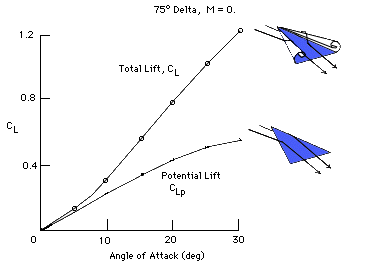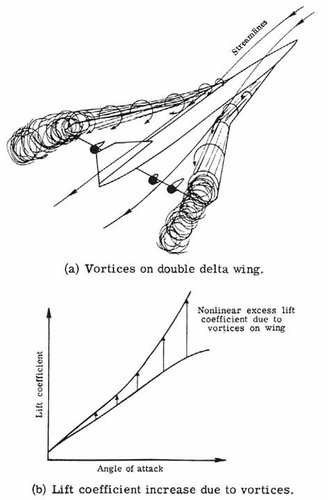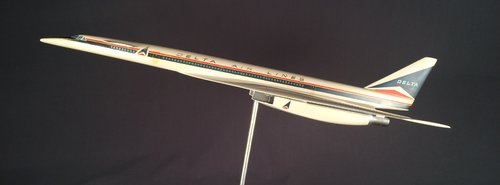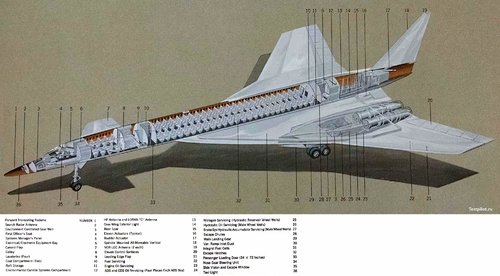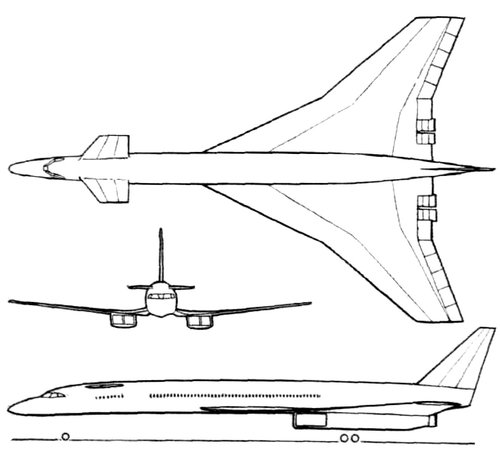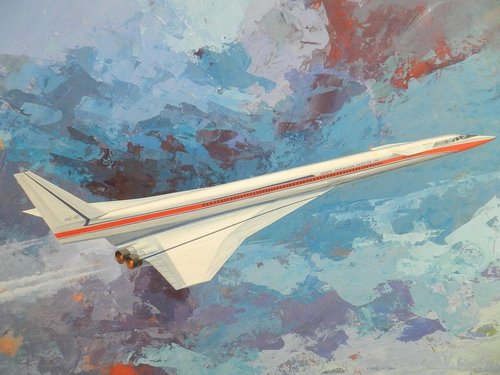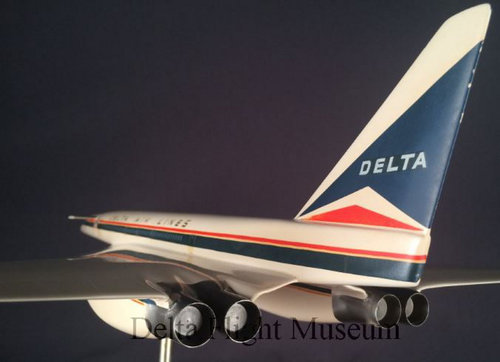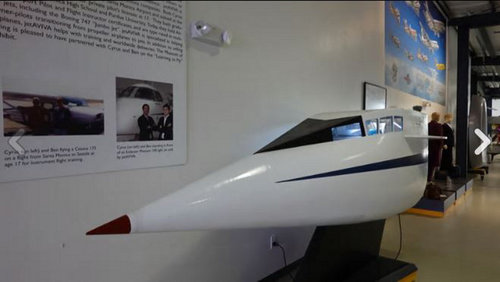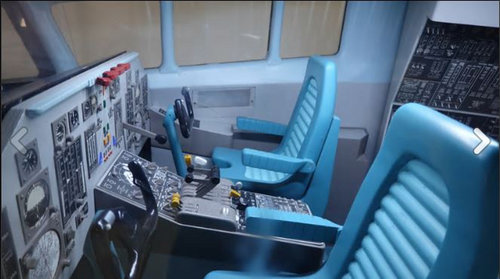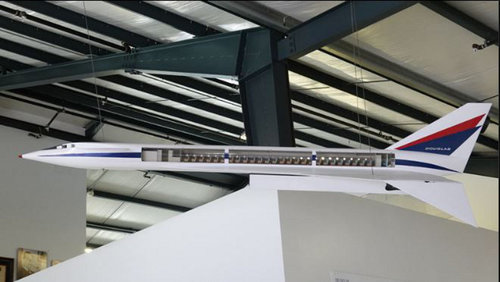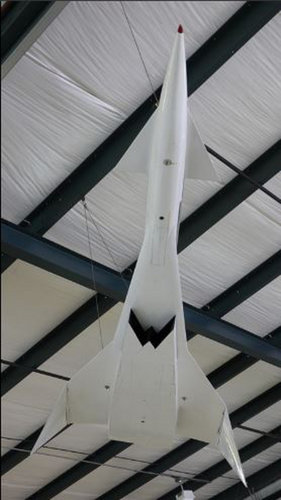You are using an out of date browser. It may not display this or other websites correctly.
You should upgrade or use an alternative browser.
You should upgrade or use an alternative browser.
US Supersonic Transport (SST) Program 1960-1971
- Thread starter Orionblamblam
- Start date
blackkite
Don't laugh, don't cry, don't even curse, but.....
- Joined
- 31 May 2007
- Messages
- 8,821
- Reaction score
- 7,721
Thanks a lot. Excellent!!
Please enjoy L2000 model. You can enlarge model picture by pressing bottom '+' mark after click model picture. Also you can move model picture by mouse.
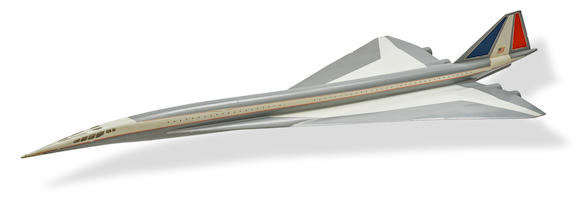
 www.bonhams.com
www.bonhams.com
Please enjoy L2000 model. You can enlarge model picture by pressing bottom '+' mark after click model picture. Also you can move model picture by mouse.

Bonhams : Lockheed SST Prototype Model
Model of the Lockheed L-2000 7A airplane, 1/50th scale, approximately 49-1/2 x 27-1/2 x 8-1/8 inches (1,257 x 699 x 206 mm). Designed by Richard Heppe (1923-2015), unverified manufacturer but likely a prototype model built by Lockheed in Burbank prior to the June 27, 1966 unveiling of their...
Attachments
Last edited:
blackkite
Don't laugh, don't cry, don't even curse, but.....
- Joined
- 31 May 2007
- Messages
- 8,821
- Reaction score
- 7,721
1964: SUPERSONIC TRANSPORT (SST)
MOT 1964: SUPERSONIC TRANSPORT (SST): Lockheed Aircraft executive Robert Bailey at desk, SOT talking about commercial L-2000 model on desk, 1800 to 2000 mph, development, challenges for exterior heat, propulsion system, REVERSE PAN Edge of Earth space. Note: Boeing 2702 won.
MOT 1964: SUPERSONIC TRANSPORT (SST): Lockheed Aircraft executive Robert Bailey at desk, SOT talking about commercial L-2000 model on desk, 1800 to 2000 mph, development, challenges for exterior heat, propulsion system, REVERSE PAN Edge of Earth space. Note: Boeing 2702 won.
Getty Images
Getty Images 日本国. オンラインで最も充実したイメージ検索写真ライブラリで、高解像度のロイヤリティフリーイメージ、エディトリアルストックフォト、ベクターアート、ビデオ映像クリップ、ストック音楽ライセンスを検索できます。
www.gettyimages.co.jp
Last edited:
blackkite
Don't laugh, don't cry, don't even curse, but.....
- Joined
- 31 May 2007
- Messages
- 8,821
- Reaction score
- 7,721
Hi!

 picclick.com
picclick.com

OFFICIAL PROTOTYPE 1966 1/50 Scale Lockheed L-2000-7A SST MODEL 64" - WOW!!!! • $9,500.00
OFFICIAL PROTOTYPE 1966 1/50 Scale Lockheed L-2000-7A SST MODEL 64" - WOW!!!! - $9,500.00. FOR SALE! 162203047964
Attachments
- Joined
- 27 September 2006
- Messages
- 6,418
- Reaction score
- 6,827
Many years ago now I saw a broken Pacmin model of a Boeing 2707 300 in Airlift livery on Ebay. Recently I saw an Air New Zealand (not an optionholder) variant on Picclick.
It would be interesting to know from anyone with Pacmin connections if they kept records of the liveries made
It would be interesting to know from anyone with Pacmin connections if they kept records of the liveries made
blackkite
Don't laugh, don't cry, don't even curse, but.....
- Joined
- 31 May 2007
- Messages
- 8,821
- Reaction score
- 7,721
Hi!
 twitter.com
twitter.com
What is this?
#世界に広まれSSTの輪 - Twitter Search
The latest Tweets on #世界に広まれSSTの輪. Read what people are saying and join the conversation.
What is this?
Attachments
Last edited:
blackkite
Don't laugh, don't cry, don't even curse, but.....
- Joined
- 31 May 2007
- Messages
- 8,821
- Reaction score
- 7,721
blackkite
Don't laugh, don't cry, don't even curse, but.....
- Joined
- 31 May 2007
- Messages
- 8,821
- Reaction score
- 7,721
Hi! 733-94.
This drawing title is mach2 SST? I think this design was mach3 SST.
What is 969 series?
This drawing title is mach2 SST? I think this design was mach3 SST.
What is 969 series?
Attachments
Last edited:
Yes 733-290, the model is so-so... but the sonic boom effect is cool.
Thanks for the 733-94 plan !
Last edited:
Hi! 733-94.
This drawing title is mach2 SST? I think this design was mach3 SST.
What is 969 series?
From what I understand,
969-XXX were internal Boeing designations for some of the SST configurations.
Like the 733-XXX designations. Seems only when Boeing got awarded the contract did they assigned commercial Boeing 2707-XXX names, but Boeing 2707-300 still had 733-633 internal designation. the Boeing 2707 and 2707-100 and 200 were in the 733-4XX serie apparently, first one being 733-467.
Blackkite-San, please could you tell me what this means :


(or the all Japanese timeline text
I’ve tried passing these into an OCR, then through a translator, but it gives me a gibberish about sea food and house construction… hardly SST related.
- Joined
- 26 May 2006
- Messages
- 34,924
- Reaction score
- 15,794
blackkite
Don't laugh, don't cry, don't even curse, but.....
- Joined
- 31 May 2007
- Messages
- 8,821
- Reaction score
- 7,721
Late 1957
The technology developed in the WS-110A (B-70) bomber design competition and the core engineers in the design competition were gathered to form the first Boeing SST design team.
1960
In order to compare both the delta wing plan and the variable swept wing plan, Boeing created two competitive design teams in-house and conducted a competitive design. As a result of comparing the competition results, Boeing considered that the good low speed performance of the variable swept wing was very advantageous.
Mid 1963
NASA requested Boeing and Lockheed to conduct a comparative study on the four plans SCAT17, SCAT4, SCAT16, and SCAT15.
From early 1964 to mid-1964, Phase I
FAA requested each aircraft manufacturer in the US to propose a supersonic passenger aircraft. FAA selected the proposals of Boeing and Lockheed from the development proposals of each aircraft manufacturer and started the design competition for practical supersonic passenger aircraft.
Late 1964, Phase IIA
1965, Phase IIB
Early 1966, Phase IIC
Boeing reviewed and evaluated the delta wing aircraft with tails based on design proposal 733-204, but did not get much improvement and did not go deep.
Late 1966
Boeing won the SST design competition because the B2707-100 design proposal was advantageous at low speeds.
Late 1967 to early 1968, Phase III
Boeing decided to review the basic form of the SST because the B2707 series design proposal was stuck, and reexamined the variable swept wing plan, the delta wing plan, the SCAT15 plan.
Mid 1968
Boeing selected three proposals 969-302, 969-404B, and 969-320B that satisfy the requirements for payload, cruising range, safety, etc. after three months of study.
The technology developed in the WS-110A (B-70) bomber design competition and the core engineers in the design competition were gathered to form the first Boeing SST design team.
1960
In order to compare both the delta wing plan and the variable swept wing plan, Boeing created two competitive design teams in-house and conducted a competitive design. As a result of comparing the competition results, Boeing considered that the good low speed performance of the variable swept wing was very advantageous.
Mid 1963
NASA requested Boeing and Lockheed to conduct a comparative study on the four plans SCAT17, SCAT4, SCAT16, and SCAT15.
From early 1964 to mid-1964, Phase I
FAA requested each aircraft manufacturer in the US to propose a supersonic passenger aircraft. FAA selected the proposals of Boeing and Lockheed from the development proposals of each aircraft manufacturer and started the design competition for practical supersonic passenger aircraft.
Late 1964, Phase IIA
1965, Phase IIB
Early 1966, Phase IIC
Boeing reviewed and evaluated the delta wing aircraft with tails based on design proposal 733-204, but did not get much improvement and did not go deep.
Late 1966
Boeing won the SST design competition because the B2707-100 design proposal was advantageous at low speeds.
Late 1967 to early 1968, Phase III
Boeing decided to review the basic form of the SST because the B2707 series design proposal was stuck, and reexamined the variable swept wing plan, the delta wing plan, the SCAT15 plan.
Mid 1968
Boeing selected three proposals 969-302, 969-404B, and 969-320B that satisfy the requirements for payload, cruising range, safety, etc. after three months of study.
I will try to translate Japanese explanation of each SSTdesign into English.
Give me time for a while.
Thank you very much ! take your time
The Japanese timeline image seems to have much more detailed explanations than the one in english.
Last edited:
blackkite
Don't laugh, don't cry, don't even curse, but.....
- Joined
- 31 May 2007
- Messages
- 8,821
- Reaction score
- 7,721
733-101
This is the first proposal for Boeing's variable swept wing SST. This plan was created based on research on TFX (F111) and arrow wings, which Boeing Co. and NASA conducted.
733-204
During Phase I, Boeing considered how far a good SST could be made using fixed delta wing. As a result of the examination, the proposal 733-204 satisfied the target value in the payload and cruising range, but the low speed performance did not satisfy the target value.
From 733-197 to 733-290
SCAT15F advanced aerodynamic design was used to improve from 733-197 to 733-290.
SCAT15F
NASA continued research on fixed arrow wings the SCAT15F proposal.
SCAT15F
Boeing reassessed NASA's SCAT15F proposal. The payload and cruising range were excellent, but the low speed performance was poor and the development risk was large, so it was concluded that this scheme was disadvantageous.
733-467
Boeing reexamined various SST configurations because the 733-290 type wing-tail separation type variable swept wing plan got stuck due to exhaust and tail interference problems. As a result, the draft 733-290 was integrated with the good part of SCAT15 to create the draft 733-467.
B2707-200
Boeing has proceeded with design studies such as B2707, B2707-100, and B2707-200, and solved problems such as steering stability. However, the weight increased and the cruising performance could not satisfy the required value.
SAT15F
Boeing added a horizontal tail to improve the vertical maneuverability of the SCAT15F to the standard value.
962-302
The delta wing with tail wing, 969-302, has the best payload and cruising performance because it can reduce its own weight. Since the wing span was large and the swept angle was small, the low speed performance was good.
969-404
The 969-404 proposal for the separate tail and wing variable swept wing has the best landing performance. However, there is a large risk of interference between the tail and exhaust, and it is structurally complex.
969-320
The 969-320 proposal based on SCAT15 could have the best payload and range, but the low speed performance was the worst. In addition, there was a significant decrease in handling stability due to aircraft deflection. Boeing, however, continued to consider the 969-320 proposal as a baseline for aerodynamic technology, including solutions for low-speed performance.
B2707-300
Boeing compared the 969-302, 969-320, and 969-402 plans, and selected the B2707-300 as the basic form of SST trial production.
Excellent 2707-300 pictures here.
 www.coroflot.com
www.coroflot.com
This is the first proposal for Boeing's variable swept wing SST. This plan was created based on research on TFX (F111) and arrow wings, which Boeing Co. and NASA conducted.
733-204
During Phase I, Boeing considered how far a good SST could be made using fixed delta wing. As a result of the examination, the proposal 733-204 satisfied the target value in the payload and cruising range, but the low speed performance did not satisfy the target value.
From 733-197 to 733-290
SCAT15F advanced aerodynamic design was used to improve from 733-197 to 733-290.
SCAT15F
NASA continued research on fixed arrow wings the SCAT15F proposal.
SCAT15F
Boeing reassessed NASA's SCAT15F proposal. The payload and cruising range were excellent, but the low speed performance was poor and the development risk was large, so it was concluded that this scheme was disadvantageous.
733-467
Boeing reexamined various SST configurations because the 733-290 type wing-tail separation type variable swept wing plan got stuck due to exhaust and tail interference problems. As a result, the draft 733-290 was integrated with the good part of SCAT15 to create the draft 733-467.
B2707-200
Boeing has proceeded with design studies such as B2707, B2707-100, and B2707-200, and solved problems such as steering stability. However, the weight increased and the cruising performance could not satisfy the required value.
SAT15F
Boeing added a horizontal tail to improve the vertical maneuverability of the SCAT15F to the standard value.
962-302
The delta wing with tail wing, 969-302, has the best payload and cruising performance because it can reduce its own weight. Since the wing span was large and the swept angle was small, the low speed performance was good.
969-404
The 969-404 proposal for the separate tail and wing variable swept wing has the best landing performance. However, there is a large risk of interference between the tail and exhaust, and it is structurally complex.
969-320
The 969-320 proposal based on SCAT15 could have the best payload and range, but the low speed performance was the worst. In addition, there was a significant decrease in handling stability due to aircraft deflection. Boeing, however, continued to consider the 969-320 proposal as a baseline for aerodynamic technology, including solutions for low-speed performance.
B2707-300
Boeing compared the 969-302, 969-320, and 969-402 plans, and selected the B2707-300 as the basic form of SST trial production.
Excellent 2707-300 pictures here.
Aircraft Design
several pictures from aircraft design, my master and bachelor thesis... - by Miroslav Dorotcin
Last edited:
Fantastic ! Thanks you very much again.
I recently had a crush on the SCAT-15F. It really was an aerodynamic wonder with a L/D of 10 against 7 for all the others, Concorde and Boeing included. NASA Langley had refined it over and over and it was a very fine aerodynamic job they had done. Even today it would held its ground as far as supersonic L/D goes.
But, alas, once out of the wind tunnel as mentionned
low speed handling was vicious.
Basically the aircraft stall was a SOB and it would slam into the ground at landing, faster than human reaction time.
I'm not sure even an analog FBW like Concorde could tame that beast. Yet in May 1972 flew a NASA Crusader with the first ever digital FBW, courtesy of former LM pilot Neil Armstrong now at NASA HQ.
What might have been...
But, alas, once out of the wind tunnel as mentionned
the low speed performance was poor
low speed handling was vicious.
Basically the aircraft stall was a SOB and it would slam into the ground at landing, faster than human reaction time.
I'm not sure even an analog FBW like Concorde could tame that beast. Yet in May 1972 flew a NASA Crusader with the first ever digital FBW, courtesy of former LM pilot Neil Armstrong now at NASA HQ.
What might have been...
Last edited:
blackkite
Don't laugh, don't cry, don't even curse, but.....
- Joined
- 31 May 2007
- Messages
- 8,821
- Reaction score
- 7,721
That's Lockheed L-2000 mockup isn't it ? first time I saw it (in a magazine 25 years ago) with the Concorde shape and the tricolour on the tail I assumed it was... a Concorde
SCAT-15F in Google images. What a beauty...
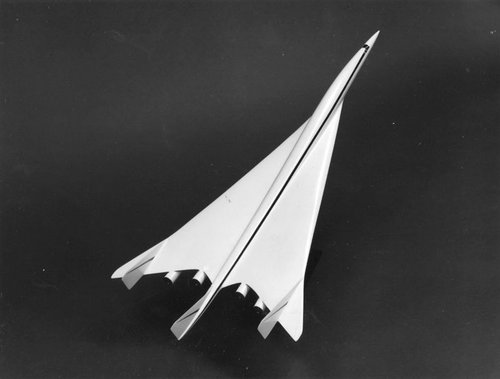
I.need.a.1/72.scale.model.of.this.on.my.desk. Look at the wing trailing-edge, how it delicately curves near the engine nozzles... an aerodynamic wonder, I told yah.
It is a freakkin' Adriana Karambeu of aircraft.
Last edited:
blackkite
Don't laugh, don't cry, don't even curse, but.....
- Joined
- 31 May 2007
- Messages
- 8,821
- Reaction score
- 7,721
It is a freakkin' Adriana Karambeu of aircraft.
*splutter* Well. That's not very woke of you. Why aren't you touting the Jessica Yaniv of aircraft? Huh?
blackkite
Don't laugh, don't cry, don't even curse, but.....
- Joined
- 31 May 2007
- Messages
- 8,821
- Reaction score
- 7,721
Hi!
What a large wing leading edge flap!! Slit at wing root?

 crgis.ndc.nasa.gov
crgis.ndc.nasa.gov
What a large wing leading edge flap!! Slit at wing root?

NACA/NASA Langley: Celebrating 100 Years
NASA.gov brings you the latest images, videos and news from America's space agency. Get the latest updates on NASA missions, watch NASA TV live, and learn about our quest to reveal the unknown and benefit all humankind.
Attachments
Last edited:
SCAT-15F is not trans. It's supersonicIt is a freakkin' Adriana Karambeu of aircraft.
*splutter* Well. That's not very woke of you. Why aren't you touting the Jessica Yaniv of aircraft? Huh?
Hi!
What a large wing leading edge flap!! Slit at wing root?

NACA/NASA Langley: Celebrating 100 Years
NASA.gov brings you the latest images, videos and news from America's space agency. Get the latest updates on NASA missions, watch NASA TV live, and learn about our quest to reveal the unknown and benefit all humankind.crgis.ndc.nasa.gov
Yes. Also one interesting stuff on the SCAT-15F-B7 from document AD478511 "NASA SCAT 15-F Feasibility Study" posted here #961 ,
is that a section of the leading edge slat seems to rotate upward :
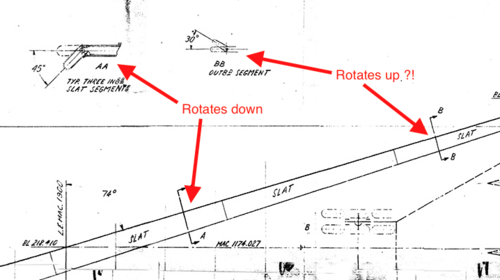
never seen that before...
Just like Levcon on TejaHi!
What a large wing leading edge flap!! Slit at wing root?

NACA/NASA Langley: Celebrating 100 Years
NASA.gov brings you the latest images, videos and news from America's space agency. Get the latest updates on NASA missions, watch NASA TV live, and learn about our quest to reveal the unknown and benefit all humankind.crgis.ndc.nasa.gov
Yes. Also one interesting stuff on the SCAT-15F-B7 from document AD478511 "NASA SCAT 15-F Feasibility Study" posted here #961 ,
is that a section of the leading edge slat seems to rotate upward :
View attachment 617725
never seen that before...
blackkite
Don't laugh, don't cry, don't even curse, but.....
- Joined
- 31 May 2007
- Messages
- 8,821
- Reaction score
- 7,721
I think this notched wing root leading edge was related to vortex lift at low speed.
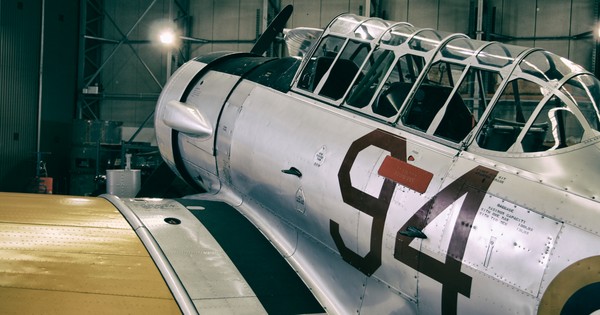
 www.quora.com
www.quora.com

Does Delta wing aircraft generate more lift than an aircraft with standard wings?
Answer (1 of 3): Typically delta wings have more surface area than swept wings of the same size, and lift generated is a simple matter of surface area, so delta wings indeed produce more lift than similarly sized swept- or straight-wing counterparts. The primary benefit of a delta wing, though, ...
Attachments
Last edited:
blackkite
Don't laugh, don't cry, don't even curse, but.....
- Joined
- 31 May 2007
- Messages
- 8,821
- Reaction score
- 7,721
Hi NAC-60!
More model pictures here, DELTA FLIGHT MUSEUM
Interesting Russian site.
Popular science.

Wing trailing edge shape is interesting.
More model pictures here, DELTA FLIGHT MUSEUM
Interesting Russian site.
Popular science.
Popular Science
Popular Science gives our readers the information and tools to improve their technology and their world. The core belief that Popular Science and our readers share: The future is going to be better, and science and technology are the driving forces that will help make it better.
books.google.co.jp
Wing trailing edge shape is interesting.
Attachments
Last edited:
MaxLegroom
Why not?
- Joined
- 28 December 2013
- Messages
- 161
- Reaction score
- 49
I remember Miss SST and the made for TV movie that came from. As I also recall, one way they tried to make the plane for the movie look different from the Lockheed SST was to hang a set of 747 engines off of it. I'm not sure they didn't use a L-2000 cockpit mockup for the movie set as well, though.Finally Boing added horizontal tail stabilizer and front wing with flap to the SCAT15F.
Please enjoy Miss SST.
blackkite
Don't laugh, don't cry, don't even curse, but.....
- Joined
- 31 May 2007
- Messages
- 8,821
- Reaction score
- 7,721
Hi! Douglas 2229 SST model in Museum of Flying Santa Monica.
circle-5 san already posted these excellent images.
circle-5 san already posted these excellent images.
Attachments
Last edited:
I remember Miss SST and the made for TV movie that came from. As I also recall, one way they tried to make the plane for the movie look different from the Lockheed SST was to hang a set of 747 engines off of it. I'm not sure they didn't use a L-2000 cockpit mockup for the movie set as well, though.Finally Boing added horizontal tail stabilizer and front wing with flap to the SCAT15F.
Please enjoy Miss SST.
that would be extraordinary. Mind you, the L-2000 mockup was dumped by Lockheed to the FAA, which brought it to its Oklahoma Office headquarters and used for passenger evacuation tests. That was in the early 70's. After the tests it stayed there, dilapidated, until it was finally scrapped.
More generally the L-2000 and 2707-300 mockups got really extraordinary (if not sad) adventures long after Lockheed lost to Boeing, and then Boeing lost to Mondale and Proxmire in the spring of 1971.
Both full-scale mockups were, after all, the closest thing from a SST America ever had.
Last edited:
taildragger
You can count on me - I won a contest
- Joined
- 2 November 2008
- Messages
- 404
- Reaction score
- 502
Hi! Douglas 2229 SST model in Museum of Flying Santa Monica.
Its interesting that the Douglas 2229 looks more like the B-70 than does the NA60 from North American. I've read contemporary accounts discussing how the NA60 built on NAA's B-70 experience, but it's missing the fold-down wingtips and central engine box adopted by Douglas.
blackkite
Don't laugh, don't cry, don't even curse, but.....
- Joined
- 31 May 2007
- Messages
- 8,821
- Reaction score
- 7,721
Yes Douglas 2229 SST was designed based on compression lift theory same as B-70.Hi! Douglas 2229 SST model in Museum of Flying Santa Monica.
Its interesting that the Douglas 2229 looks more like the B-70 than does the NA60 from North American. I've read contemporary accounts discussing how the NA60 built on NAA's B-70 experience, but it's missing the fold-down wingtips and central engine box adopted by Douglas.
Fuselage tail shape of Douglas 2229 looks like North American NAC60.
I think this shape increased vertical tail stabilizer area.
Last edited:
blackkite
Don't laugh, don't cry, don't even curse, but.....
- Joined
- 31 May 2007
- Messages
- 8,821
- Reaction score
- 7,721
Hi! NASA film.
5'24" Boing B2707(VG) mockup, SCAT15F wind tunnel test, XB-70 flight test.....
https://www.youtube.com/watch?v=6XWWybkVdPU&pbjreload=10
5'24" Boing B2707(VG) mockup, SCAT15F wind tunnel test, XB-70 flight test.....
https://www.youtube.com/watch?v=6XWWybkVdPU&pbjreload=10
blackkite
Don't laugh, don't cry, don't even curse, but.....
- Joined
- 31 May 2007
- Messages
- 8,821
- Reaction score
- 7,721
Mid 1963
NASA requested Boeing and Lockheed to conduct a comparative study on the four plans SCAT17, SCAT4, SCAT16, and SCAT15.
The first Image top to bottom
SCAT4
SCAT17 later became B2707-300, L2000 and NAC60
SCAT16 later became B2707-200
SCAT15 later became SCAT15F
SCAT4 was Richard Whitcomb's idea. SCAT4 was a very advanced design.
I can see following SCAT4 shapes.
(1)Six engine type
(2)Vertical and horizontal tail stabilizer with 4 engine type

 crgis.ndc.nasa.gov
crgis.ndc.nasa.gov
NASA requested Boeing and Lockheed to conduct a comparative study on the four plans SCAT17, SCAT4, SCAT16, and SCAT15.
The first Image top to bottom
SCAT4
SCAT17 later became B2707-300, L2000 and NAC60
SCAT16 later became B2707-200
SCAT15 later became SCAT15F
SCAT4 was Richard Whitcomb's idea. SCAT4 was a very advanced design.
I can see following SCAT4 shapes.
(1)Six engine type
(2)Vertical and horizontal tail stabilizer with 4 engine type

NACA/NASA Langley: Celebrating 100 Years
NASA.gov brings you the latest images, videos and news from America's space agency. Get the latest updates on NASA missions, watch NASA TV live, and learn about our quest to reveal the unknown and benefit all humankind.
Attachments
-
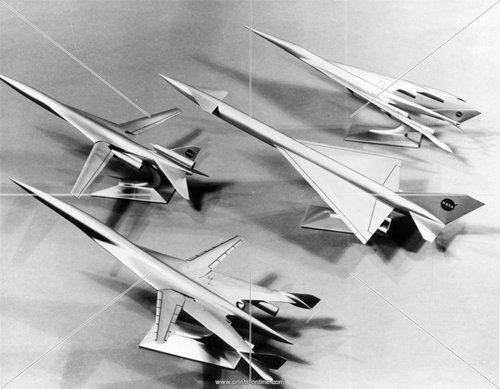 image.jpg84.3 KB · Views: 228
image.jpg84.3 KB · Views: 228 -
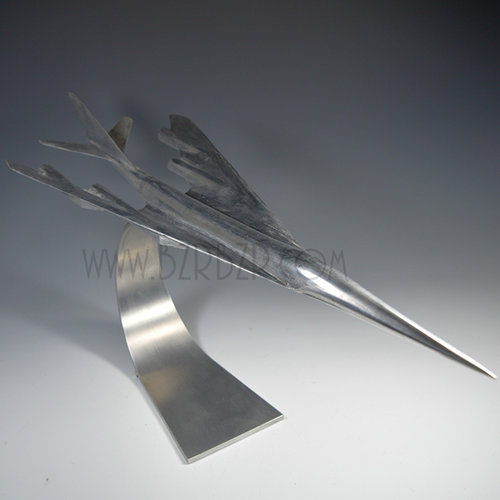 Wind Tunnel Model of the NASA Supersonic SCAT 4.jpg112.4 KB · Views: 201
Wind Tunnel Model of the NASA Supersonic SCAT 4.jpg112.4 KB · Views: 201 -
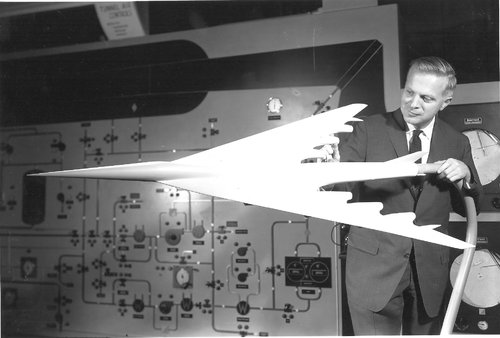 L-59-6216.jpg978.8 KB · Views: 151
L-59-6216.jpg978.8 KB · Views: 151 -
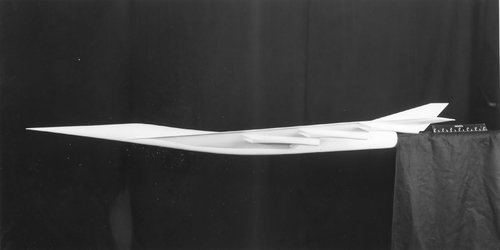 SCAT_SST_Configuration_Model_side_view_L-60-3627.jpg84.2 KB · Views: 143
SCAT_SST_Configuration_Model_side_view_L-60-3627.jpg84.2 KB · Views: 143 -
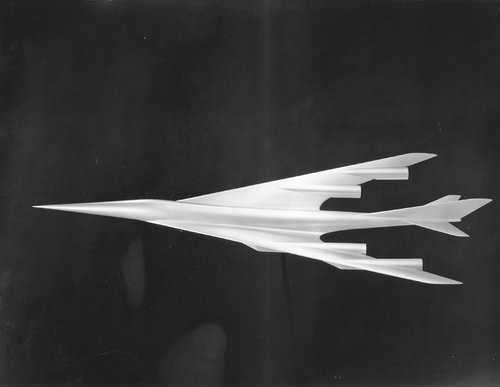 SCAT_SST_Configuration_Model2_L-62-3695.jpg265 KB · Views: 154
SCAT_SST_Configuration_Model2_L-62-3695.jpg265 KB · Views: 154 -
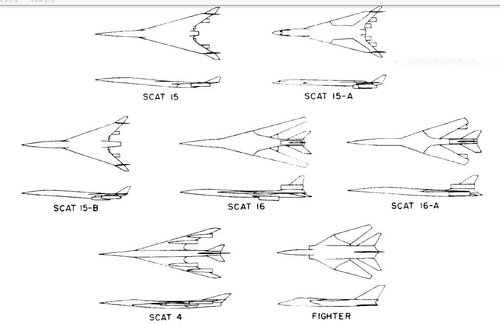 scat.JPG65.6 KB · Views: 169
scat.JPG65.6 KB · Views: 169 -
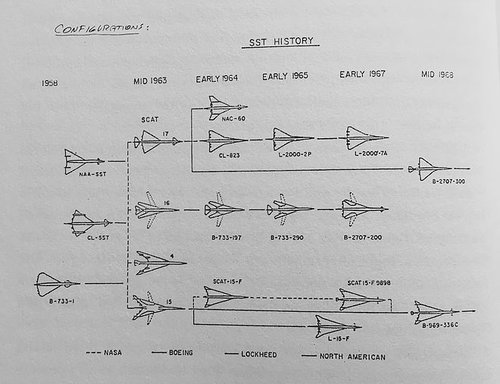 e57835_aecff5bd263f44938874f03833f5ab94~mv2_d_3145_2412_s_4_2.jpg58.4 KB · Views: 158
e57835_aecff5bd263f44938874f03833f5ab94~mv2_d_3145_2412_s_4_2.jpg58.4 KB · Views: 158 -
Description_of_SCAT-4_Correspondence_11-8-62.pdf594.4 KB · Views: 29
-
 SCAT4 SONIC BOOM.JPG51.8 KB · Views: 130
SCAT4 SONIC BOOM.JPG51.8 KB · Views: 130 -
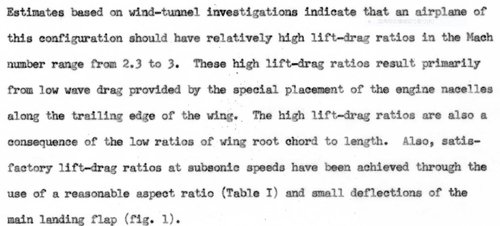 SCAT4 LIFT DRAG RATIO.JPG97.3 KB · Views: 137
SCAT4 LIFT DRAG RATIO.JPG97.3 KB · Views: 137
Last edited:
Similar threads
-
FLIGHTS OF FANTASY: The Lockheed L-2000 SST in airline service
- Started by Sentinel Chicken
- Replies: 9
-
Could the US have built an SST?
- Started by uk 75
- Replies: 35
-
-
-

